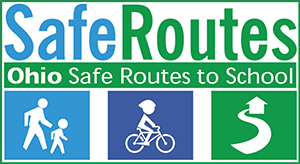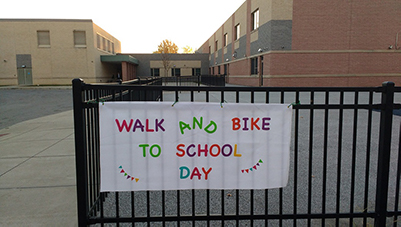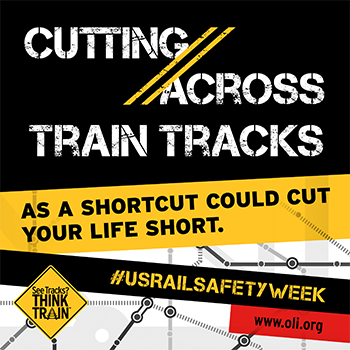
Resources
Interested in planning a Walk or Bike to School Day
or increasing walking and biking at your school?
Walk & Bike Safely...Every Day!

- Check out your school's designated school route map. (Scroll down and choose your school from the dropdown menu.) The more people who use the streets, the safer they are!
- Follow these walking and biking safety tips, no matter your age! Setting a good example makes a difference.
- Encourage educators to integrate walking and biking safety into academic instruction. The Ohio Department of Transportation provides some ideas to get started, as well as lesson plans for Grades K-2, 3-5, and 6-8 classrooms tied to Ohio learning standards.
- Educate yourself about the benefits of walking and how you can work it into your daily routine...whether it is at school, at home, or at work!
Walk and Bike to School Day Celebration Resources

- No Walk & Bike to School celebration is too small! Need some ideas? Check out this list of 10 Ways to Celebrate and these concepts for walkers, bus riders, and everyone in between! Activities can take place in the classroom, at home, and/or on the way to and from school.
- Once you've decided how you want to participate in National Walk to School Month, register to be counted and let us know what you are doing! See who you're joining across the country.
- Plan your event. Reach out to community partners and be creative. Check out these tips and this tool-kit.
- Don't forget to promote your plans to scholars, families, and community stakeholders. Here's an editable flyer that you can download and customize.
Railroad Safety for Walkers and Bikers

Operation Lifesaver, Inc. provides railroad safety information and resources for audiences of all ages, including lesson plans, videos, graphics, and safety tips. They can also connect you with a trained presenter to come to your school.
Do you have railroad tracks near your home or school? Be sure you follow these OLI Safety Tips:
- Railroad property is private property. Walking on the tracks is illegal and dangerous, and trespassers are subject to arrest and fines.
- The only safe place to cross is at a designated public crossing with flashing red lights or a gate. If you cross at any other place, you are trespassing and can be ticketed or fined.
- Look and listen for a train as you approach all railroad crossings - obey all signs, warning lights and gates. Never walk around or behind lowered gates at a crossing, and DO NOT cross the tracks until the lights have stopped flashing and it's safe to do so.
- Do not cross the tracks immediately after a train passes. A second train might be blocked by the first. Trains can come from either direction. Wait until you can see clearly around the first train in both directions.
- Trains are quieter and faster than you think - never try to beat a train. It can take a mile or more to stop a train, so a locomotive engineer who suddenly sees someone on the tracks will likely be unable to stop in time.
- Trains overhang the tracks by at least three feet in both directions; loose straps hanging from rail cars may extend even further. If you are standing next to the tracks, you can be hit by the train.
- Do not attempt to hop aboard railroad equipment at any time. A slip of the foot can cost you a limb or your life.
- Be aware trains do not follow set schedules. Any time is train time!